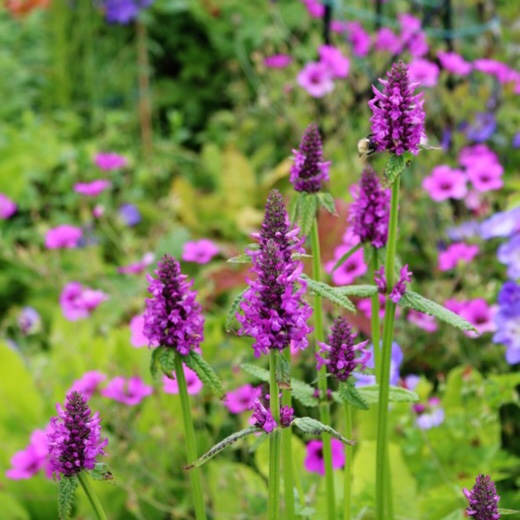
Stachys officinalis 'Hummelo'
Salvia 'Hummelo'
'Hummelo' is a clump-forming perennial, which is mainly grown for the rose-lavender flowers which appear in summer. These flowers are held on upright spikes above the rosettes of dark green leaves and act as a magnet for bees.
Contributed by @Patiorose
-
Full sun to partial shade
-
Very little water
-
Full Frost Hardy: 5F (-15°C)
-
Free draining
Common name
Salvia 'Hummelo'
Latin name
Stachys officinalis 'Hummelo'
type
Herbaceous Perennials
family
Lamiaceae
ph
5.6 - 8.4 Acid - Neutral
Plant & bloom calendar
-
Best time to plant
-
When the plant will bloom
full grown dimensions
 0.70 M
0.50 M
0.70 M
0.50 M
Stachys officinalis 'Hummelo'
'Hummelo' is a clump-forming perennial, which is mainly grown for the rose-lavender flowers which appear in summer. These flowers are held on upright spikes above the rosettes of dark green leaves and act as a magnet for bees.
Flowering Season
From Early Summer TO Late Summer
Flowers appear in Summer on tall upright spikes
Planting Season
From Early Spring TO Mid Spring
Plant in fertile, well-draining soil in a sunny position in Spring
Propagation by Division
From Early Spring TO Early Spring
Using a fork dig up plant, trying to keep the root ball as complete as possible. Split the root ball at the centre with a sharp knife or a spade, or by placing two garden forks back-to-back into the middle of the root ball, and pushing the fork handles apart.to lever the root ball apart. Replant the new clumps to the same depth as the original, and water well. Keep well watered until established.












